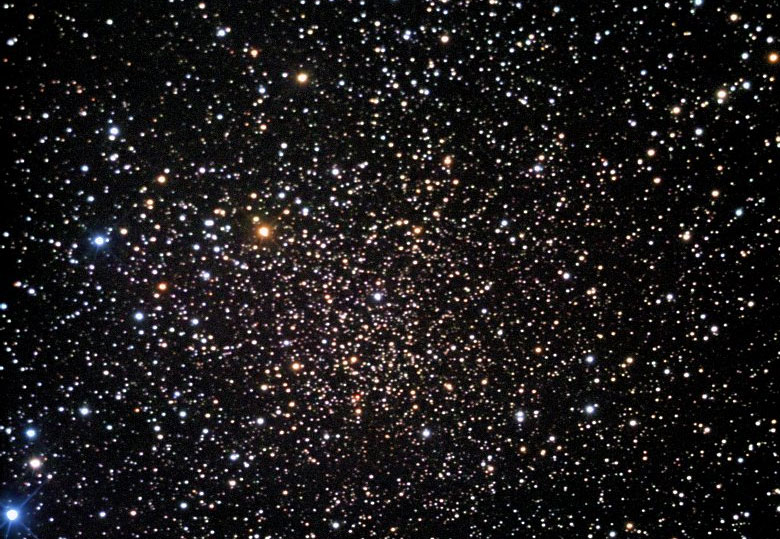
Lithium is one of the lightest chemical elements. It is also one of the few (with H and He) that was formed just after the "Big Bang" in the first three minutes of existence of the Universe. The determination of this "cosmic" (that is primordial) lithium abundance is one of the proofs of the Big Bang itself.
However the interstellar matter in the Solar neighbourhood has a higher lithium abundance than the cosmic value : this means that there are stars that produce lithium and eject it
in the interstellar space.
Unfortunately, little is known about these "lithium factories" : lithium is in fact a very fragile element and is easily destroyed in stellar interiors, therefore its synthesis requires non-standard processes.
The origin of lithium is still mysterious.
Star clusters are ideal places to conduct such studies, since they host simple stellar populations, that share the same distance, age and chemical composition. It is also very easy to identify the evolutionary phase of each star in a star cluster.
Using the spectrograph FLAMES-UVES on the ESO VLT telescope, a team of astronomers has identified the first giant star in a cluster with a lithium abundance higher than that of the
interstellar medium : it is a super-lithium-rich star in which lithium has been synthesised.
Contrary to previous observations this star is very clearly associated to a phase of helium burning in the stellar core.
Given that the time during which a star appears as lithium-rich is very short, this discovery implies that lithium has been recently created, either during the present phase
of helium burning, or just before, when the star was burning hydrogen off-center in a shell,
increasing its radius and lying on the red-giant branch, or during the extremely dynamical phase of the ignition of the helium core, the so-called helium-flash.
This discovery, published in April in the international journal "Astronomy and Astrophysics”, was obtained by an international team that includes also two astronomers of the Paris Observatory. It allows to define once and for all, the phase in which a star produces lithium.
The ball is now in the field of theoreticians, to produce models that explain the creation of lithium in this phase - a real challenge !
